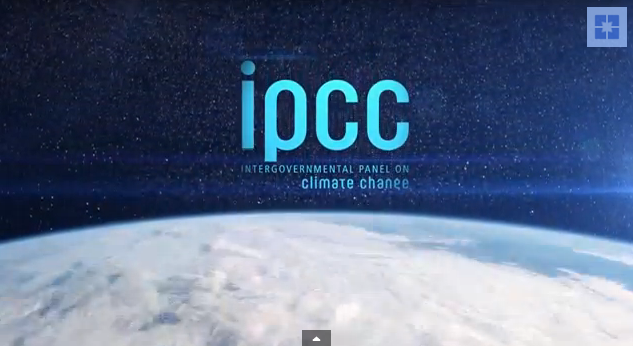#316) IPCC Releases a Boring Video
November 21st, 2013
Video is a powerful tool with great potential for broad communication. But it’s not as simple as just gluing together a laundry list of facts. Sorry, but the IPCC just produced a video that is bo-ho-ho-ring.

WHO DO THEY THINK THEY ARE REACHING WITH THIS? If it’s the general public, they will have lost them by 3 minutes in. If it’s scientists … why? They already know this stuff. This thing could have been 90 seconds and powerful. Instead it’s 7 minutes, but feels like 70. Maybe the subject matter (the fate of humanity) just isn’t very important to them so they don’t care.
TO ERR IS HUMAN, TO BORE IS POTENTIALLY DANGEROUS (in this case)
What is wrong with the people at the IPCC? How can they be so clueless about broad communication? I’m not the first one to ask this question. In 2008 my good friend John Sterman at M.I.T. published a wonderful short paper in Science in which he told about having math and science graduate students at M.I.T. regurgitate the basic message of the executive summary of the 2007 IPCC report. More than half got it wrong, showing that what was supposedly geared to the general public wasn’t even understandable enough for brilliant graduate students.
In a similar mode, the IPCC has just released the above video. I gave it 3.5 minutes, then hit the “life is too short” point and quit.
Where to begin in trying to figure out where they go wrong …
As usual, at the core of the problem is the lack of good, tight narrative structure. But there’s more.
THE GORE BENCHMARK AND “ADVANCING THE NARRATIVE”
It’s time for everyone communicating about global warming to use the Al Gore movie, “An Inconvenient Truth,” as your starting point. Anything presented in that movie you should assume that most of the public has now seen enough and move on from there.
This was the basic rule I used a couple weeks ago for our successful Sea Level Rise panel at CERF. In working with the two speakers, I ruled out all their “shocking” slides of future flooding scenarios. Gore already did that in his movie — he had southern Florida and Manhattan.
I did use images from the “Drown Your Town“ website for comic value, and Mike Orbach had the one futuristic piece of artwork of massively flooded Manhattan as part of his final summary. But we skipped the parts in the middle where you show the basic scenarios of projected flooded regions and the audience gasps on cue because they are expected to do so. Those images are no longer shocking. THE NARRATIVE HAS MOVED ON.
The key factor is the need to “advance the narrative.” This is what narrative training instills in you — the feeling of, “okay, we already hit that note plenty, let’s move on.” I don’t think the makers of this IPCC video have “advancing the narrative” in their training yet. They should. Move it on, folks, you’re boring us.
When Mike told me about the idea of sea level rise eventually reaching up to 100 miles inland by altering water tables causing groundwater contamination — THAT was when I came to life — THAT is an aspect of advancing the narrative — that is a factoid that wasn’t in the Gore movie and I think is likely to be new to most people, as well as fairly head turning.
That’s what it’s about — tell us something we haven’t already heard a thousand times, and do it with some new imagery.
BO-HO-HORING
Global warming is the most boring subject ever confronted by humanity. I firmly believe this. I was quoted saying it in 2010. Which doesn’t mean global warming should be ignored. To the contrary. It means it should be respected for how difficult it is to communicate, and the shear and utter intrinsic boringness of it should be accepted as the starting point — not ignored. Just because it is eventually life threatening does not make it interesting by definition. It just ain’t that easy.
Anyhow, I was just interviewed about this by a magazine that asked me 10 questions about why I think this. The article should be out in the next week or so. I think it’s going to annoy a lot of the climate crowd (as usual). Ho hum.